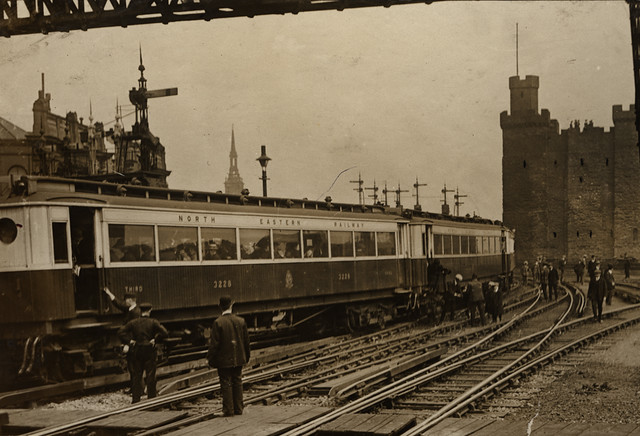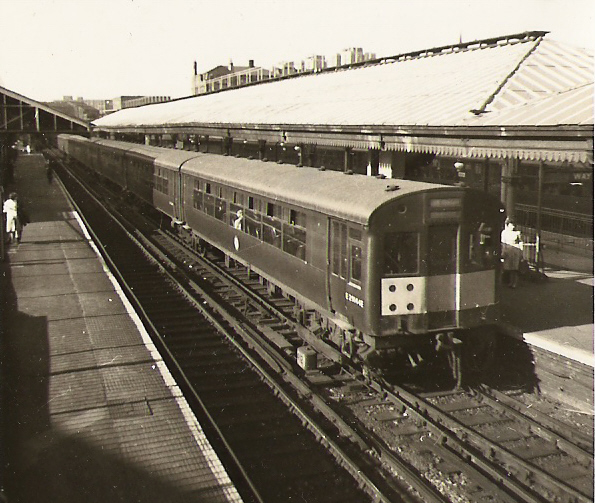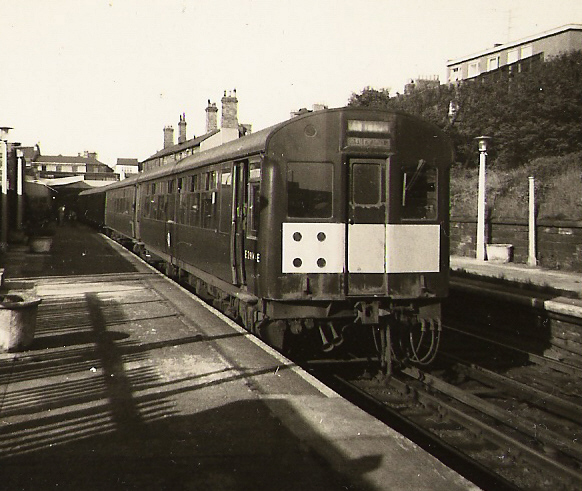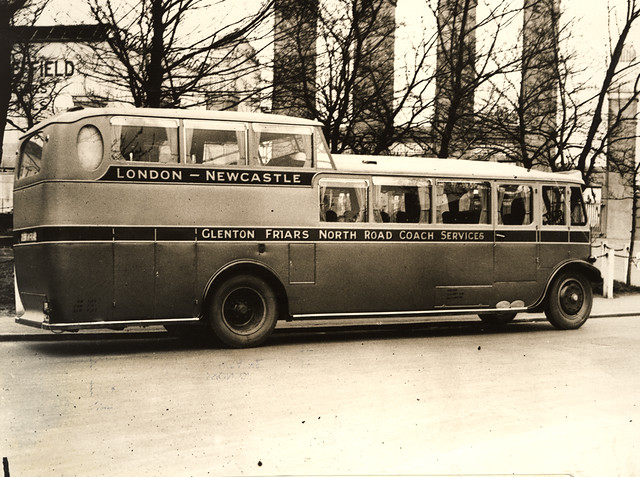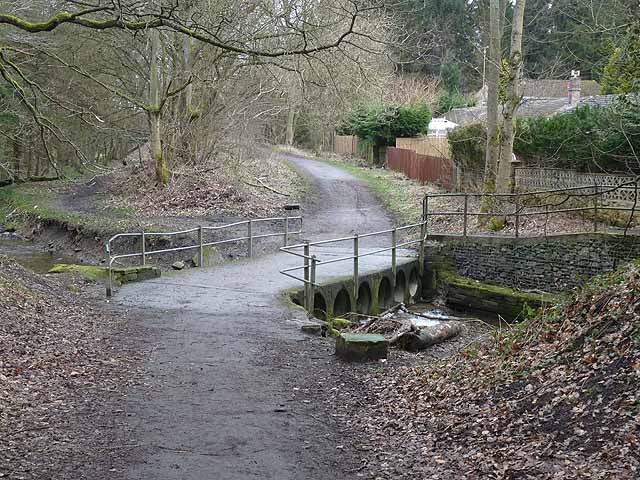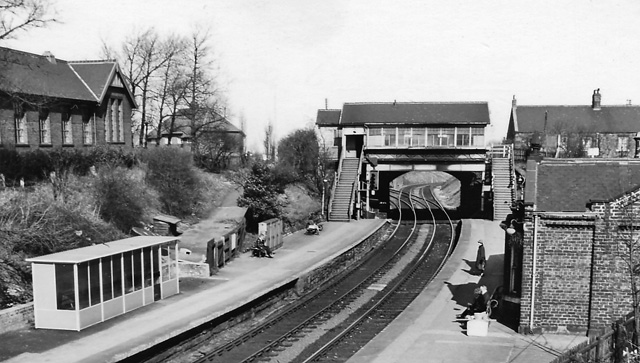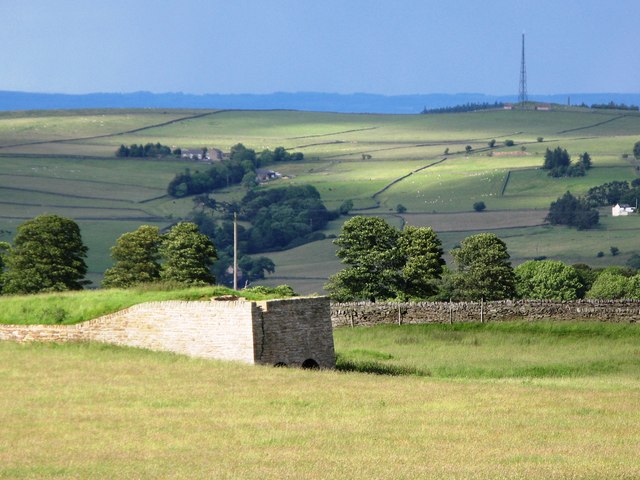Topics > Transport and Travel > Railway > Tyneside Electric Trains
Tyneside Electric Trains
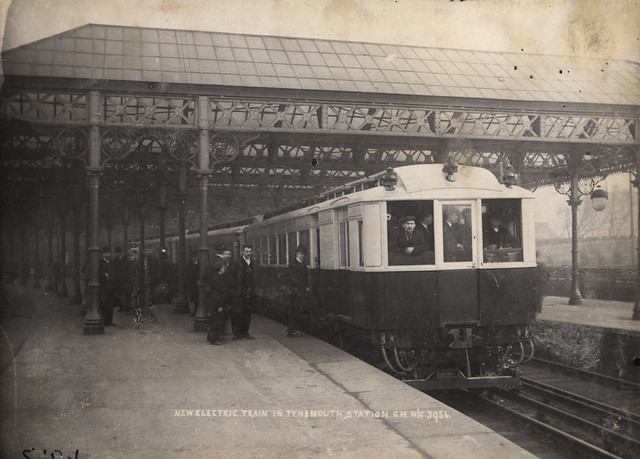 The Tyne & Wear Metro opened in 1980 and is an electric light railway. However, electric trains were in operation on Tyneside much earlier in the 20th century. The 'North Tyneside loop' (railway circuit from Newcastle & around the coast) was electrified from 1904 onwards, and was one of the earliest suburban electric rail networks.[1]
The Tyne & Wear Metro opened in 1980 and is an electric light railway. However, electric trains were in operation on Tyneside much earlier in the 20th century. The 'North Tyneside loop' (railway circuit from Newcastle & around the coast) was electrified from 1904 onwards, and was one of the earliest suburban electric rail networks.[1]  The 'Tyneside Electrics' proved very popular and reversed declining passenger numbers on the rail network, due to increased competition with trams. Electric Trains were also in operation in South Tyneside from 1908, with the Harton Electric Railway for transporting coal. However, it wasn't until 1938 that the line for passengers from Newcastle to South Shields was electrified[2]. By the 1960s costs for the Tyneside Electrics were rising, as the electric infrastructure and rolling stock were old and needed renewing. Under British Rail, the lines were converted to diesel operation; the Newcastle-South Shields line in 1963, and the north Tyneside routes in 1967. Much of these lines were later converted to Metro use.
The 'Tyneside Electrics' proved very popular and reversed declining passenger numbers on the rail network, due to increased competition with trams. Electric Trains were also in operation in South Tyneside from 1908, with the Harton Electric Railway for transporting coal. However, it wasn't until 1938 that the line for passengers from Newcastle to South Shields was electrified[2]. By the 1960s costs for the Tyneside Electrics were rising, as the electric infrastructure and rolling stock were old and needed renewing. Under British Rail, the lines were converted to diesel operation; the Newcastle-South Shields line in 1963, and the north Tyneside routes in 1967. Much of these lines were later converted to Metro use.The Tyneside Electrics were the suburban railways on Tyneside that the North Eastern Railway and the London and North Eastern Railway electrified using the third rail system. The North Tyneside loop was electrified from 1904 onwards and formed one of the earliest suburban electric networks; the South Tyneside line to South Shields via Pelaw was electrified in March 1938. British Railways converted these lines to diesel operation in the 1960s: the line to South Shields in January 1963 and the North Tyneside lines in June 1967 when the electrical supply infrastructure (which dated from 1935) and the rolling stock (which dated from 1937) had become life expired. In addition, the system was losing passengers and suffering from costly vandalism. Since the late 1970s, much of the system has been converted to form the Tyne and Wear Metro.
Routes
The original lines covered were the North Tyneside Loop from Newcastle Central via Wallsend, North Shields, Whitley Bay and South Gosforth back to Newcastle; the East Coast Main Line (ECML) from Newcastle Central to Benton (providing a short cut to Monkseaton and Whitley Bay), and the Riverside Branch from Byker to Percy Main via .
At Benton the electrified lines diverged from the ECML to join the Blyth and Tyne line (see below). These curved lines were called the South West Curve and South East Curve based on their disposition looking north. The SE Curve had scheduled electric services running over it from time to time, but the SW Curve was used for empty stock movements.
In 1923 the triangular junctions at South Gosforth were electrified in connection with opening of the new car sheds, but were used only for empty stock movements. In the same year, a route was electrified in the Heaton area. This route left the ECML at Benton Bank and ran through the freight yard at Heaton to connect with the Tynemouth lines at Heaton East Junction. It was used for empty stock movements and as an access route to Walker Gate Carriage Works where heavy repairs and overhaul of the electric stock took place. This route was called the "Heaton Independent Lines".
Finally, a short freight-only line, the Newcastle Quayside Branch left the Tynemouth lines just east of Manors East station at Trafalgar South yard, opposite Argyle Street signal box, and emerged after traversing through three tunnels into the Quayside yard adjacent to the quayside at Newcastle. This route was equipped with both overhead line and conductor rail to enable electric operation in June 1905.
History
History before electrification
The line through Jesmond, Benton and on to Tynemouth was opened in the 1860s by the Blyth and Tyne Railway (B&T), and the line through Wallsend by the Newcastle and North Shields Railway in 1839. The portion of the East Coast Main Line to Benton had been opened by the York, Newcastle and Berwick Railway in the 1840s. The Newcastle Quayside Branch had been opened by the NER in 1873, and the Riverside Branch in 1879. The junctions at South Gosforth dated back to 1905 and were laid for the Gosforth and Ponteland Branch.
Electrification
In the early 1900s, tramway competition caused a large and rapid decline in the number of passengers using the North Eastern Railway's local services in the north Tyneside area. The number of passengers using these services declined from 9,847,000 in 1901, to 5,887,000 in 1903. In 1903, in response to this, and in an effort to win back the lost passengers, the NER decided to electrify their suburban network north of the River Tyne with a 600V DC third-rail system. They hired the electrical engineer Charles H. Merz as a consultative engineer for the project, and contracted the British Thompson-Houston company to supply the electrical equipment.
The North Tyneside Loop, including the Riverside Branch, and a short stretch of the East Coast Main Line was electrified in stages between February and July 1904. The original electrified route was not quite a loop however, as the northern leg of the route ran over the former Blyth and Tyne Railway, whose Newcastle terminus was at ; an isolated terminus with no rail connection to Newcastle Central, meaning services initially ran from Newcastle Central via Tynemouth to New Bridge Street. In 1909, New Bridge Street was closed, and a connection was constructed to an extended station, in order to create a full loop, however despite this. it was not until 1917 that a full Central to Central loop service began.
The electrified stretch of the East Coast Main Line between Heaton and Benton Junction was used by certain limited stop 'express' services between Newcastle and the coast.
The electrification, and the improved service it enabled, succeeded in the aim of reversing the decline in passengers numbers, which rose steadily, and topped the ten million mark in 1913, exceeding the highest pre-electrification totals. It also substantially reduced the running cost of the service, which was reduced to less than half the cost per train mile of the steam service it replaced.
In 1923 the NER was grouped into the London and North Eastern Railway (LNER). Electrification of the South Tyneside line from Newcastle to was announced by the LNER in 1935 and electric services began in the spring of 1938.
Decline and de-electrification
Falling passenger numbers, rising costs, and the need to renew life expired infrastructure and rolling stock, meant that the Tyneside Electric network was de-electrified in the 1960s under British Rail, and converted to diesel operation. The Newcastle-South Shields line was de-electrified in 1963, and the north Tyneside routes were de-electrified in 1967.
Successor
In the late-1970s much of the former Tyneside Electric network was incorporated, in modified form, into the Tyne and Wear Metro: The North Tyneside Loop (minus the Riverside Branch which was closed in 1973), plus the South Shields branch was incorporated into the Metro. A new underground section under Newcastle and Gateshead and new bridges were added, part of the former Ponteland Branch was also included, and the network was re-electrified with overhead lines.
Rolling stock
North Eastern Railway
The North Eastern Railway began using electric multiple units between and on 29 March 1904 and from 25 July 1904 over the entire route from Newcastle Central via Percy Main to Tynemouth, returning to New Bridge Street via Jesmond. The railway was electrified with a third rail at 600V DC. One hundred electric multiple unit cars, built in NER's York workshop, were equipped by British Thompson-Houston (BTH) with BTH and Westinghouse equipment. Two motor parcels vans were used with passenger coaches on workman's trains. In 1909-15 an additional 11 motor cars and 11 trailers were built.
In August 1918 there was a serious fire at the original car shed at Walkergate, which completely destroyed 34 cars and damaged many more. An order for 35 replacement cars was placed and these were built between 1920 and 1922. These were to a different design, with elliptical roofline and more powerful motors. a powered parcels van built in 1904 is in the National Railway Museum collection and on loan to the Stephenson Railway Museum.
This fire affected rolling stock policy for the rest of the life of the system through to 1967. When the original cars were life-expired in the 1930s, the replacement cars were not, so while new LNER units were built to replace all the stock then in use, the replacement cars were moved on to the newly electrified South Shields line, whose commissioning in 1938 coincided with the arrival of the new LNER stock. In turn, this meant the replacement cars were life-expired in the 1950s, when what was standard electric stock of the time, to the Southern Region pattern with separate compartments, quite different (and to some extent inappropriate) with what had existed before was built. In the early 1960s, the ability to redeploy this quite recent stock to the Southern Region was a significant part of the decision to de-electrify the South Shields line, which they had been principally employed on, leaving the north side lines to run on with the LNER units until they too were life expired some years later and the electric system was closed down..
London and North Eastern Railway
The NER stock remained in service with the LNER after the 1923 grouping. In 1937 the newest ex-NER stock, built in 1920 to replace those vehicles lost in the 1918 fire, was refurbished for use on the newly electrified South Tyneside line. The other NER stock, some of which dated back to 1903–04 was replaced on the North Tyneside lines by new articulated units built by Metropolitan Cammell.
British Railways
The LNER 1937 stock remained in service with British Railways (BR) after nationalisation in 1948. In 1955 BR introduced new stock on the South Tyneside line based on the Southern Region 2–EPB stock and was designated "South Tyneside 1951 Stock". They were electrically identical to the 2–EPB but the body on the motor brake cars had a much larger luggage space to accommodate prams. Minor detail differences were route indicating lights and destination blinds. The 1920 stock was withdrawn and was broken up at Simonside Wagon Works near Tyne Dock in the period 1956–58, although some vehicles were retained for departmental use or saw further service as "Pram Vans".
When the South Tyneside line was de-electrified in January 1963, all but one of the 1951 EPB stock was transferred to the Southern Region. The exception was Motor Parcels Van E68000 which was transferred to the London Midland Region's Liverpool — Southport line, renumbered M68000 and used for another five years before being withdrawn in 1968. It thus had a service life of just 12 years – less than half of its capital life in financial terms.
Visit the page: Tyneside Electrics for references and further details. You can contribute to this article on Wikipedia.

from Newcastle libraries (flickr)
018703:Tynemouth Station North Tyneside C.1910
Pinned by Simon Cotterill
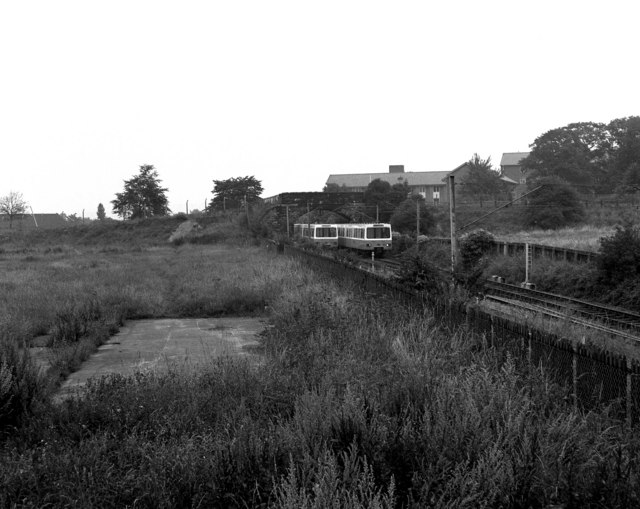
Co-Curate Page
Tyne and Wear Metro
- Overview About the Tyne & Wear Metro Stations The Metro is operated by Nexus (Tyne and Wear Passenger Transport Authority) forming a major part of the regions integrated transport network. …
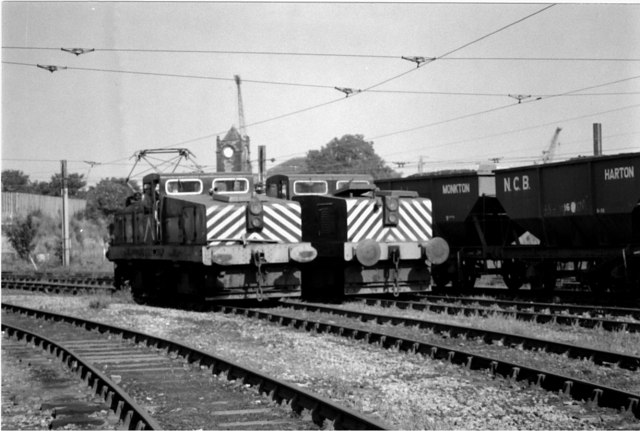
Co-Curate Page
Harton Electric Railway
- Harton Electric Railway was built by the Harton Coal Company to transport coal from their collieries in South Tyneside. The electrified system opened in 1908, and originally employed a fleet of …

from https://en.wikipedia.org/wiki…
Tyneside Electrics
- "The Tyneside Electrics were the suburban railways on Tyneside that the North Eastern Railway and the London and North Eastern Railway electrified using the third rail system. The North Tyneside …
Added by
Simon Cotterill
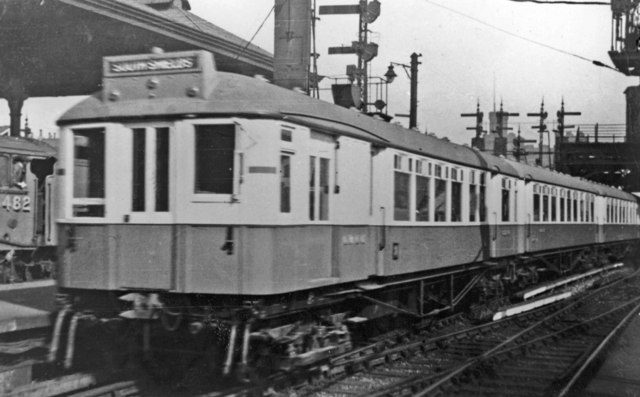
from Geograph (geograph)
South Tyneside Electric train at Newcastle Central, 1938
Pinned by Simon Cotterill

from https://commons.wikimedia.org…
Tyneside Electrics rail network at its greatest extent
- Diagram by 'G-13114', "Tyneside Electrics rail network at its greatest extent. Self work, based on map in the book 'The North Eastern Electrics' by Ken Hoole" Image licensed for reuse …
Added by
Simon Cotterill
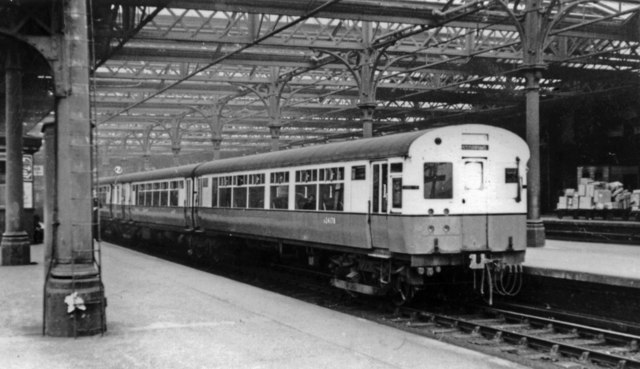
from Geograph (geograph)
North Tyneside 2-Car EMU at Newcastle Central, 1950
Pinned by Simon Cotterill

from Youtube (youtube)
NER 1903 Electric Autocar - Lifting body onto chassis - 22 July 2016
Pinned by Simon Cotterill
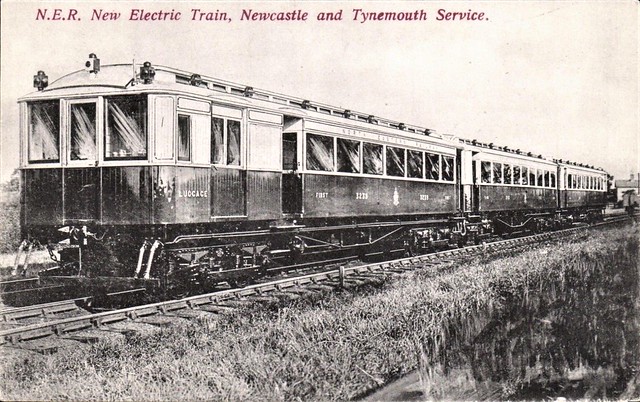
from Flickr (flickr)
Newcastle Tynemouth Service. N.E.R. New Electric Train by R.Johnston. 1908
Pinned by Peter Smith


from Newcastle libraries (flickr)
018703:Tynemouth Station North Tyneside C.1910
Pinned by Simon Cotterill

Co-Curate Page
Tyne and Wear Metro
- Overview About the Tyne & Wear Metro Stations The Metro is operated by Nexus (Tyne and Wear Passenger Transport Authority) forming a major part of the regions integrated transport network. …

Co-Curate Page
Harton Electric Railway
- Harton Electric Railway was built by the Harton Coal Company to transport coal from their collieries in South Tyneside. The electrified system opened in 1908, and originally employed a fleet of …

from https://en.wikipedia.org/wiki…
Tyneside Electrics
- "The Tyneside Electrics were the suburban railways on Tyneside that the North Eastern Railway and the London and North Eastern Railway electrified using the third rail system. The North Tyneside …
Added by
Simon Cotterill

from Geograph (geograph)
South Tyneside Electric train at Newcastle Central, 1938
Pinned by Simon Cotterill

from https://commons.wikimedia.org…
Tyneside Electrics rail network at its greatest extent
- Diagram by 'G-13114', "Tyneside Electrics rail network at its greatest extent. Self work, based on map in the book 'The North Eastern Electrics' by Ken Hoole" Image licensed for reuse …
Added by
Simon Cotterill

from Geograph (geograph)
North Tyneside 2-Car EMU at Newcastle Central, 1950
Pinned by Simon Cotterill

from Youtube (youtube)
NER 1903 Electric Autocar - Lifting body onto chassis - 22 July 2016
Pinned by Simon Cotterill

from Flickr (flickr)
Newcastle Tynemouth Service. N.E.R. New Electric Train by R.Johnston. 1908
Pinned by Peter Smith



